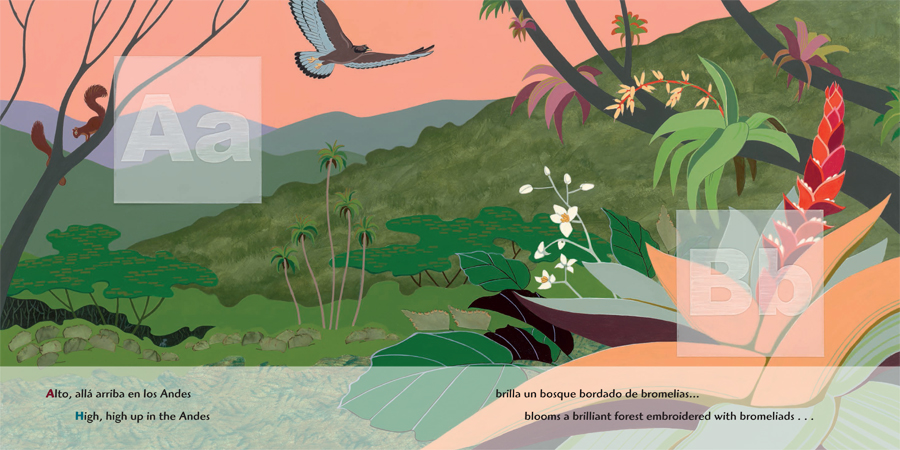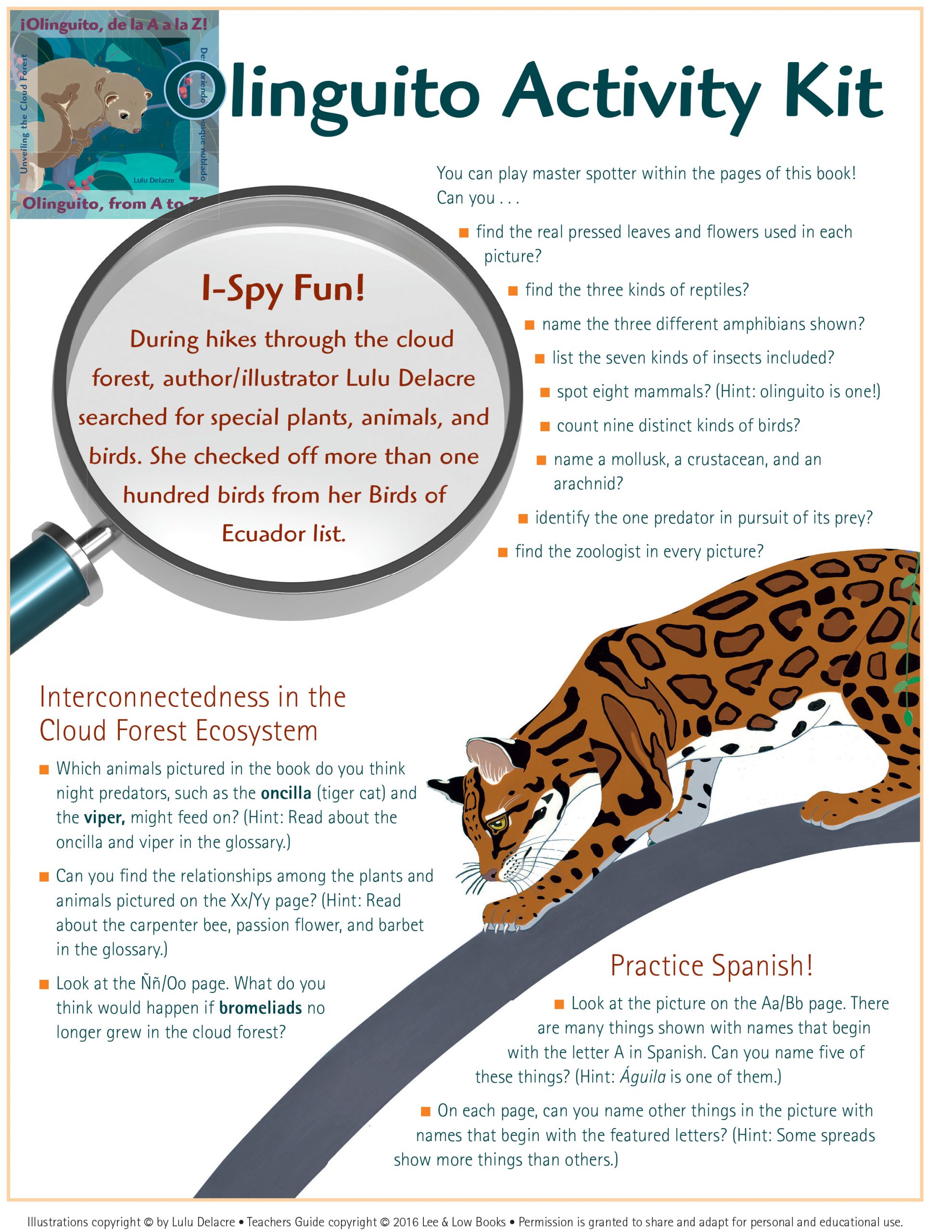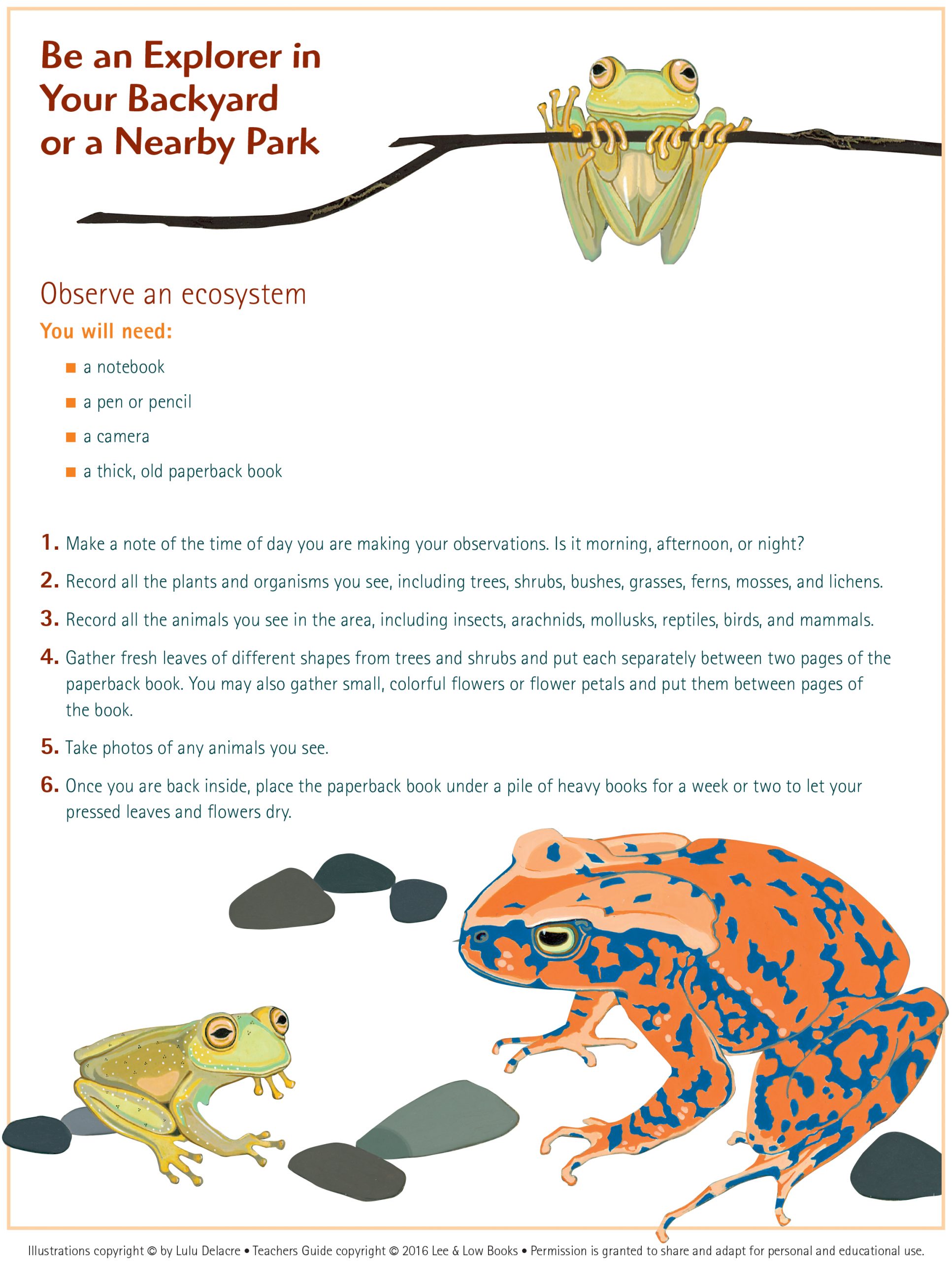Have you ever wanted to take a trip to the cloud forest? Explore the Andes of Ecuador? Discover a new species? Well, you’re in luck.
With ¡Olinguito, de la A a la Z! / Olinguito from A to Z! travel to the unique world of the cloud forest and discover the bounty of plants, animals, and other organisms that live there as you help a zoologist look for the elusive olinguito, the first new mammal species identified in the Americas since 1978.
But the adventure doesn’t stop there. Anyone can learn to be an explorer in their own backyard with the FREE Olinguito Activity Kit and Teacher’s Guide. Learn more about the cloud forest and other ecosystems, including all of the important animals and the adaptations that help them survive in their environment with the many interdisciplinary ideas, projects, and engaging activities.
Content themes and subjects covered:
- ecosystems and habitats
- biodiversity
- animal classification and adaptation
- vertebrates and invertebrates
- competition and predation
- world geography
Here’s a preview of the types of engaging projects and activities you can find in the Olinguito Activity Kit and Teacher’s Guide:
can find in the Olinguito Activity Kit and Teacher’s Guide:
Observe an Ecosystem!
You will need:
- a notebook
- a pen or pencil
- a camera
- a thick, old paperback book
- Make note of the time of day you are making your observations. Is it morning, afternoon, or night?
- Record all the plants and organisms you see, including trees, shrubs, bushes, grasses, ferns, mosses, and lichens.
- Record all the animals you see in the area, including insects, arachnids, mollusks, reptiles, birds and mammals.
- Gather fresh leaves of different shapes from trees and shrubs and put each separately between two pages of the paperback book. You may also gather small, colorful flowers or flower petals and put them between pages of the book.
- Take photos of any animals you see.
- Once you are back inside, place the paperback book under a pile of heavy books for a week or two to let you pressed leaves and flowers dry.
Design a Cloud Forest Travel Brochure!
Have students research cloud forests in the Andes and create an informative and persuasive travel brochure. Include headings, subheadings, pictures, maps, and informative captions.
- Where are the cloud forests located?
- What plants and animals live there?
- Why are cloud forests valued or important?
- What is the climate like?
- What will people see there?
- What environmental and human threats do they face?
- Why should someone make the cloud forest his or her next vacation destination?
Create a Cloud Forest Alphabet or Glossary Book:
- card stock
- hole puncher
- string or twine
- art decorating supplies (crayons, colored pencils, markers. etc.)
Alphabet Book: include the featured letter, a picture or drawing of the featured plant or animal, and the name of the plant or animal.
Plant/Animal Glossary Book: include the name of the plant or animal, a picture or drawing of the featured plant or animal, and an informative description of the plant or animal: where does it live? what does it eat? how is it classified (plant or animal, vertebrate or invertebrate, etc.)?
For more fun and exciting activity ideas, including I-Spy Fun and learning to create you own pressed leaf print, check out and download the FREE Olinguito Activity Kit and Teacher’s Guide.
You can purchase a copy of ¡Olinguito, de la A a la Z! / Olinguito, from A to Z! : Descubriendo el bosque nublado / Unveiling the Cloud Forest on our website here.
 Veronica has a degree from Mount Saint Mary College and joined LEE & LOW in the fall of 2014. She has a background in education and holds a New York State childhood education (1-6) and students with disabilities (1-6) certification. When she’s not wandering around New York City, you can find her hiking or hanging out with her dog Milo in her hometown in the Hudson Valley, NY.
Veronica has a degree from Mount Saint Mary College and joined LEE & LOW in the fall of 2014. She has a background in education and holds a New York State childhood education (1-6) and students with disabilities (1-6) certification. When she’s not wandering around New York City, you can find her hiking or hanging out with her dog Milo in her hometown in the Hudson Valley, NY.








